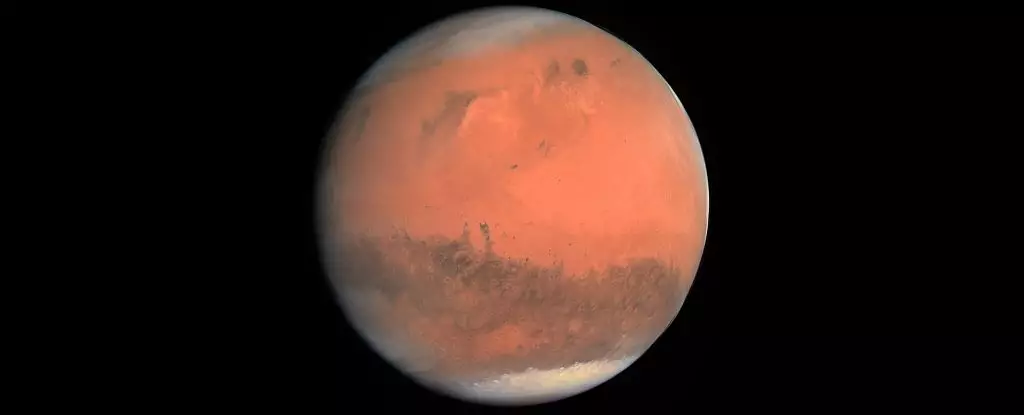Mars, often referred to as the “Red Planet,” is a fascinating celestial body that captivates astronomers and space enthusiasts alike. Its distinct reddish hue is a prominent feature that distinguishes it from other planets in our solar system. However, recent advancements in planetary science suggest that our traditional explanations for this iconic coloration may require reevaluation. For many years, scientists believed that iron oxides, particularly hematite, were primarily responsible for the rust-like appearance of Mars. Now, emerging research indicates that the process of oxidation that lends Mars its signature color may have been influenced significantly by the presence of water.
Traditional Theories on Martian Oxidation
Historically, it was established that the iron-rich surface of Mars had undergone extensive oxidation, resulting in a layer of rust that enveloped the planet. This oxidation was commonly attributed to dry conditions, suggesting that hematite, a mineral that forms under anhydrous environments, was the key player in this transformation. According to this model, water had long since evaporated from Mars’s surface before substantial oxidation took place, leading experts to conclude that hematite’s formation signaled a planet stripped of liquid water.
However, contradictions began to arise as data from multiple spacecraft missions to Mars emerged. Observations of Martian dust failed to capture evidence supporting long-term dry conditions, leading scientists to question the established narrative. The chemical signatures present in the Martian soil prompted researchers to reconsider the relationship between water and the formation of oxidized minerals.
In a groundbreaking study led by planetary geologist Adomas Valantinas from Brown University, new insights have begun reshaping our understanding of Mars’s geological history. Valantinas and his team aimed to simulate Martian dust in a laboratory setting, employing various iron oxides to determine which minerals could plausibly account for the observations made by orbiting spacecraft. Their findings pointed toward ferrihydrite, an iron oxide that forms rapidly in the presence of water, as a more accurate reflection of Mars’s mineral composition.
The researchers meticulously analyzed Martian data, comparing their hypotheses against meteorite samples and rover observations. Through their careful protocols, the team established that the best correlation between laboratory-generated samples and Martian observations was indeed with ferrihydrite, not hematite. This pivot towards ferrihydrite undermines the long-standing belief that the rusting of Mars was entirely a product of aridity, suggesting instead that early historical conditions on the planet were much wetter than previously believed.
The discovery that ferrihydrite may be the mineral responsible for Mars’s rusty appearance has profound implications for our understanding of the planet’s past. If ferrihydrite formed in wet conditions, it indicates that Mars underwent oxidation earlier in its geological timeline, during a timeframe when liquid water was still present on its surface. This shifts the paradigm regarding Mars’s environmental evolution, suggesting a potential habitat for early life forms.
Moreover, ferrihydrite’s stability under current Martian conditions could provide vital clues about water availability throughout Mars’s history. The continuous presence of this mineral would support theories that suggest a more dynamic and humid climate existed during Mars’s formative years.
While these findings offer a transformative perspective on Martian geology, the scientific community remains cautious. Further investigations, including analyses of Martian soil samples collected from future missions, are essential to validate these insights. With samples stored and awaiting examination, scientists hold hope that forthcoming data will further illuminate Mars’s enigmatic history.
As research progresses, we stand on the brink of understanding one of our solar system’s most intriguing planets. The evolution of our perceptions surrounding Mars not only highlights the importance of questioning established scientific narratives but also beckons toward a more nuanced appreciation of the interplay between liquid water and geological processes beyond Earth. The quest for knowledge continues, reminding us that even as we define boundaries in our understanding, the cosmos has more stories yet to tell.


Leave a Reply